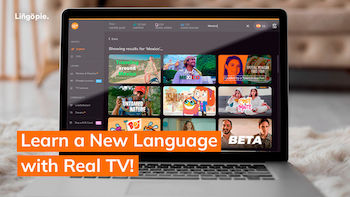
To err is human
We all make mistakes, that’s an inevitable fact. And despite what many would think, making them is not that bad, because it’s mostly from the error, that, both, the students and the teachers learn. It’s mainly from the acknowledge of the error that the solution comes.
“The knowledge of being wrong is only a starting point” (Corder, 1973)
First of all, it is important to distinguish between ‘mistake’ and ‘error’. A mistake is made with lack of intention, can be product of the fatigue or carelessness, but it can be corrected by the one that made it, whereas an error is due only to the lack of knowledge.
The source of the errors are mainly two:
1. Errors caused by transfer of the learner’s first language (called technically “Interlingua transfer”). This kind of error is very interesting because it means that the student is investigating the new system of the language he is learning, and resorts to his mother language to improvise in the target language.
2. Development errors (“Intralingual errors”). These are result of partial learning, when the learner knows some rules and tries to apply them in general. One very common error in this group is to overgeneralize, for instance, in the english language would be something like “I goed to the beach last week”. Other thing that the student tends to do is to build up concepts or hypotheses about the target language from their limited experience with it. (ej. I don’t know why did he go: did is there because why is a question mark…).
It is essential for a teacher to investigate about errors, in order to recognize the strategies a learner use to acquire the new language and the difficulties the learner bumps into. Only by knowing all that, the teacher will be able to create materials and resource to easy the student’s life.
Besides, the error tells the teacher how far the student is regarding to the language he’s learning and what remains for him to learn, and following this progress, the teacher can carry on the studies in accordance with what the learner needs to know.
Error is a source of feedback for the teacher, showing him how effective his teaching style is and what changes has to be made to get better results with the student.
Error correction

How should teachers correct students? What kind of feedback should they give? Does each error need to be treated?
In general, the teacher’s job is to point out when something has gone wrong and see if the student can correct himself. Then, find out if what the student says or writes is just a mistake, or if it is an error. However, the technique of correction is not simply pointing the error repeatedly and going through the same set of exercises over an over again. Remember that mechanical learning produces mechanical answers and most of them are wrong. On the contrary, the teacher needs to understand the source of the error, so that he can provide appropriate remedy, which will resolve the learner’s problems and allow him to discover the rules by himself. So, again, the source of the error is an important clue for the teacher to decide on the sort of treatment.
A good error correction should lie on determining which is the information that needs to be presented to the learner and what statements should be made about it. Since it is absolutely impossible and counterproductive for a teacher to deal with all the errors of the students, a hierarchy should be established to correct only the significant ones. In such a hierarchy, the priority should be given to errors which might affect the communication and cause misunderstanding, for instance, small errors like following example usually need not be corrected as the message is clear and correction might interrupt a learner in the flow of productive communication (ej: I gave she a present). On the other hand, global errors need to be corrected, since the message is not understood clearly (ej: Daddy my car happy tomorrow buy).
For oral works, I would recommended that students making mistakes during a fluent speech should not be interrupted, but be reminded of the mistakes and talk about the reasons. Whereas for correcting written works, I don’t correct the students’ mistakes directly but instead, put marks indicating there is something wrong with that sentence, word, or punctuation, and the student should find out which the error is and solve it.
To err leads to perfection.
Bibliography
Corder, S.P. (1973). Introducing applied linguistics. Middlesex, Penguin.
Erdoğan, V. (2005). Contribution of Error Analysis to Foreign Language Teaching.



Nice contribution, nice website template, continue the great work
Thanks. I will 🙂